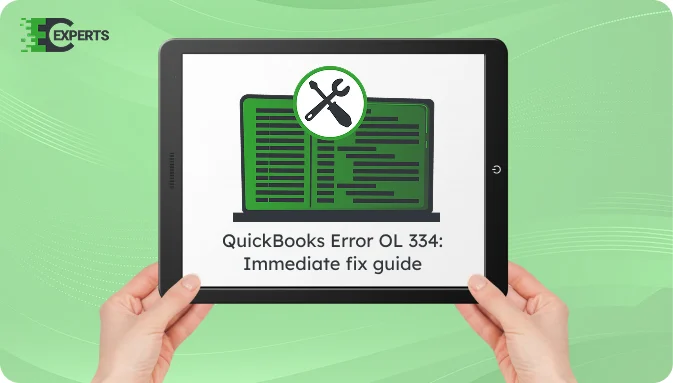![]() Struggling with software errors? Get expert help—fast, secure, and available 24/7.
Struggling with software errors? Get expert help—fast, secure, and available 24/7.
![]() Struggling with software errors? Get expert help—fast, secure, and available 24/7.
Struggling with software errors? Get expert help—fast, secure, and available 24/7.
Published: 15 October, 2025 | Updated: 12 December, 2025
Author
Error Code Experts Staff
Contents
QuickBooks Error OL 334 occurs when QuickBooks Desktop fails to communicate with your bank’s online server during the transaction download process. It typically arises due to outdated banking information, incorrect login credentials, or bank-side maintenance. This guide explains what causes the error, how to recognize it, and the steps to fix it efficiently.
QuickBooks Error OL 334 is a banking connectivity error that appears when users try to download online transactions or connect to their financial institution. The error message often reads:
“QuickBooks is unable to connect to the bank. Please verify your account information and try again.”
This issue disrupts bank feeds and prevents users from accessing real-time account data.
Several reasons can trigger this error during online banking synchronization:
You can recognize QuickBooks Error OL 334 through the following signs:
Follow these verified solutions in sequence, starting from basic checks to more advanced troubleshooting.
Outdated software can prevent QuickBooks from syncing properly with financial institutions.
Incorrect credentials can lead to OL 334. Log in to your bank’s website to verify credentials before updating them in QuickBooks.
TLS 1.2 ensures secure communication between QuickBooks and bank servers.
This process resets the connection and removes any outdated configuration.
A damaged company file can interrupt online banking functions.
Yes. The QuickBooks Tool Hub includes utilities that automatically fix most errors, including OL 334. It repairs connection issues, resets network settings, and corrects corrupted files. Select Program Problems > Quick Fix My Program to resolve the issue automatically.
To avoid this error:
If you still face the error after trying all solutions, the problem may stem from your bank’s side or deep corruption in your QuickBooks company file. At this stage, professional support ensures accurate diagnosis and permanent resolution.
The team at Error Code Experts specializes in resolving QuickBooks banking and file-related errors like OL 334. Our experts can remotely diagnose your system, repair damaged files, and restore secure bank connectivity.
For quick help, contact Error Code Experts at +1800-949-1746


Author
Error Code Experts StaffWe are a team of certified IT and financial systems specialists with over 10 years of experience in fixing accounting software issues. We specialize in system integration, data migration, and diagnostics - making it easier for accountants and business owners to resolve complex errors. When not solving technical problems, our team enjoys refining internal tools and sharing practical fixes with the wider accounting community.